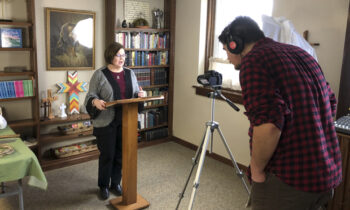By: Sheila Crowley
Murray County News Staffwriter
According to the history listed with the Minnesota Conservation Volunteer publication and Minnesota Historical Society, hundreds of years ago, American Indians used natural signs, not thermometers, to tell them when it was time to start making syrup. For example, when the crows and eagles started to return to Minnesota from their winter grounds, the Ojibwe Indians knew that the sap would soon start flowing, so they moved their damps to the sugar bush.
Further history lists maple syrup and sugar among the first foods exported from the United States. European explorers in the 1600s brought back reports of the native people collecting sap and cooking it to make maple syrup and sugar. Soon, fur traders and other Europeans were trading cloth, metal pots, and other goods for maple products.
Although technology has changed some of the way maple syrup is made, the simplicity of the process remains much the same. Every spring Katie Chapman, Director of Environmental Education at Shetek Lutheran Ministries, offers interested individuals the opportunity to learn this process.
This past Saturday a group of people attended her Saturday session. The morning was spent learning how to identify a Maple tree, determining circumference, their leaves, and about the bark of the tree. Attendees walked around the grounds of the camp checking out the trees to test their ability to determine what types of trees grow around the camp area.
Classes offered every spring focus on each facet of harvesting sap and making syrup. Shetek Lutheran Ministries offers five different species of Maple trees – all of which are good to tap for harvesting sap. Most prominent are the large and old silver Maples with their thin and narrowly pointed leaves and flaky, silvery bark. There is also a scattering of Sugar Maples distinguished by their thin bark and exceptionally colored fall leaves as well as Norway Maples known best for their thick canopy of broad, deep green leaves. The camp also has a few Red Maples and a decorative hybrid known as the Autumn Blaze. In all the camp has 125 trees to tap from.
To read the rest of this article – pick up a copy of this week’s Murray County News or subscribe to our e-edition at http://eedition.murraycountynews.net/sub/account_login.asp.





